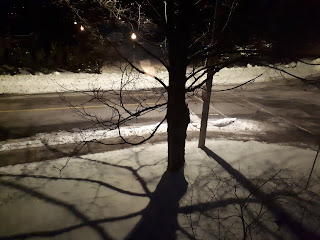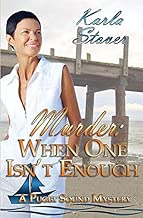As
any historical fiction author can attest, an enormous amount of
research is necessary before and during the writing of an historical
novel. That research can include reading primary and secondary
sources, visiting historical sites, museums, and the location of the
story’s setting. It may also include Internet searches and the use
of digital archives. Speaking with experts, such as I’ve been
fortunate enough to do while researching my forthcoming novel, is
always of great value. It also tends to lead to more research as
often the author is given more book titles and websites to peruse.
I
consider myself especially fortunate in that I have tucked away in my
pocket, so to speak, my own personal research historian. His name is
Tom Kelleher. Tom is a professional Research Historian and Curator
for Old Sturbridge Village, (OSV, aka the Village) a living history museum in Sturbridge,
Massachusetts which portrays rural life in an 1830s New England town.
I
first met Tom when I worked for Old Sturbridge Village. I was a
Museum Assistant in the Department of Research, Collections, and
Library during the mid-1990s. My position entailed administrative
duties to the Director of Historical Research as well as the all
other research historians and curators. Along with the secretarial
duties, I got to assist with research projects for books and museum
exhibits as well as helping curators catalog the artifacts and
reproductions. It was an amazing experience with a fantastic group of
people.
Tom
had already been working at OSV for many years by the time I started.
He began as a costumed interpreter, mostly working in the Blacksmith
shop and the saw and grist mills. Before long, he knew the whole
village and its crafts well enough to fill in just about anywhere.
With a Master’s Degree in History and a Bachelor’s in Education,
he moved up the ranks to Historian and Curator.
Tom
is one of the most brilliant people I’ve ever met in my life. He’s
also one of the most capable and self-sufficient. He has a blacksmith
shop at his own home. He also does his own coopering, making barrels,
butter churns, pails, etc. for gifts or paying customers. He learned
to do stone carving so that he could replace the headstones in the
Village’s cemetery (not a real cemetery). He was also kind enough
to make headstones for my beloved cats when they passed away and I
buried them in my backyard. He is adept at tinsmithing, pottery,
milling, and any number of 19th
century crafts. He’s sewn some of his own work costumes using his
grandmother’s treadle sewing machine. I could go on, but you
probably get the point.
Over
the years, Tom has created and portrayed many 19th
century characters at Old Sturbridge Village including at dentist, a
peddler, an itinerant preacher, and even a phrenologist (yes, he
learned to read the bumps on people’s heads, just as the 19th
phrenologists did when it was all the rage.)
Tom’s
abilities are a wonder to behold, but they don’t begin to compare
with what’s in his head. The amount of knowledge he has in regards
to history (and many other things, for that matter) is astounding. I
sometimes wonder if he has an eidetic memory. He is especially
well-versed in 19th
century American history for obvious reasons, but his Master’s
Degree was in European History so he’s got a vast store of
knowledge on that as well. In fact, I’m always amazed at what he
knows about almost any time period and place.
Tom
and I got to know each other very well during the three years I
worked for Old Sturbridge Village. Actually, that’s an
understatement. We started dating and continued for eight years. We
got engaged, almost got married, broke up, and got back together as
friends. Tom is probably my best friend in the world and, hopefully,
always will be. He is a constant in my life. We were right not to
marry, but we were also right to remain friends. Our relationship is
stronger than ever today.
One
lovely bonus of my deep friendship with Tom is that he is happy to
act as my personal research historian. Countless times, I’ve needed
an answer that would have taken precious time to look up, if I could
find the answer at all. A quick text to Tom and I’ve got what I
need in minutes. Here is a sample of some of the texts we’ve shared
while I’ve been working on Erin’s
Children,
the sequel to
Kelegeen.
ME:
If one 19th
c. person is telling another one not to spend too much money is it
okay if he says, “get what you need, just don’t break the bank”?
According to Google, the expression goes back to the 1600s, but was
it in common use in the 1850s?
TOM:
That is fine. Lots of banks broke in 1837.
ME:
Did people drink hot chocolate or hot cocoa in the 1850s?
TOM:
Yes. Drinking chocolate was the most common way to consume it then.
But not cocoa.
ME:
Would the man of the house carve the Thanksgiving turkey at the
table or is that more of a Norman Rockwell fiction?
TOM:
The wife.
ME:
Seriously? At the table? The husband led the blessing, though,
right?
TOM:
Yes to both.
ME:
How much did it cost to rent a sleigh and horse for an hour or two
in 1851?
TOM:
I guess 25 cents is about right. With a driver, make it 50 cents.
ME:
Could they have gone for a sleigh ride on a Sunday or would that be
against the having too much fun on a Sunday law?
TOM:
Not on a Sunday. Sorry. Go to sleep. (Okay, ‘cuz I sent that
particular text at 11:00 p.m.)
ME:
In what year did most northerners realize civil war [American Civil
War] was probably inevitable? Was there a specific incident that made
them feel that way? I mean before Fort Sumter.
TOM:
Well, people had warned about it since the 1830s at least. But
inevitable? No. Even when South Carolina left many thought they could
be brought back. Jackson did as much in 1832. When six more deep
south states left many thought it could be reversed. When the upper
south left many on both sides thought it would be a quick war. The
long blood bath surprised most. So no.
This
is just a small sample, but it seems as though any history question I
have, whether about huge events or the details of everyday life can
be answered with a quick text to Tom.
To
attest even further to this, when I was speaking with Holly Izard who
is the Curator of Collections for the Worcester Historical Museum and
a former research historian at Old Sturbridge Village, I happened to
mention that I often text Tom with my questions. Holly, who knew Tom
years ago when she worked at the Village, said to me, “There are
times when I just can’t find an answer to an historical question.
When that happens I email Tom. He never fails me. There are just some
things I know for a fact only Tom will have the answer to.”
I
hear that!
Historian, Curator, and Costumed Interpreter at Old Sturbridge Village,
Tom Kelleher



































.jpg)



.jpg)


